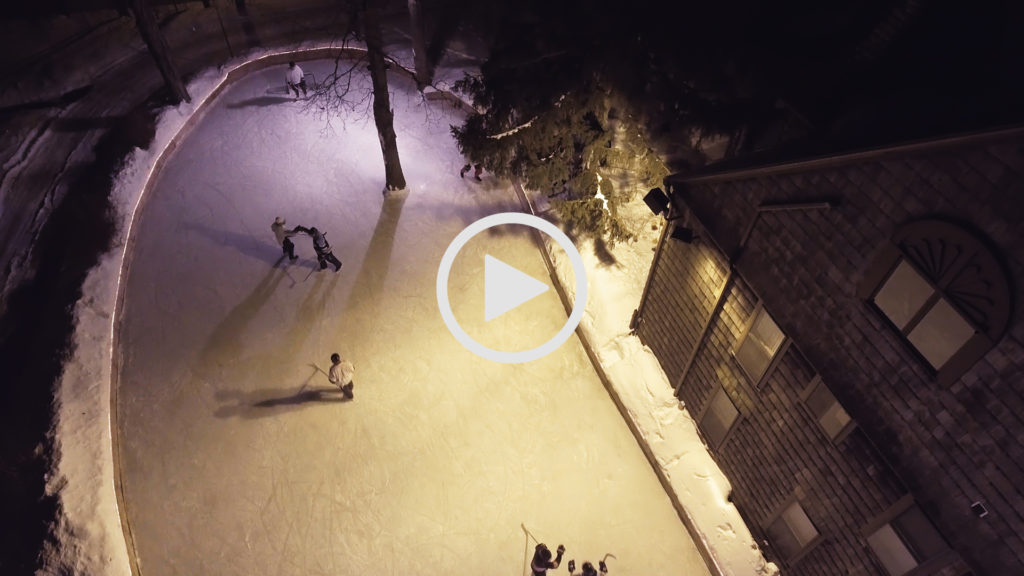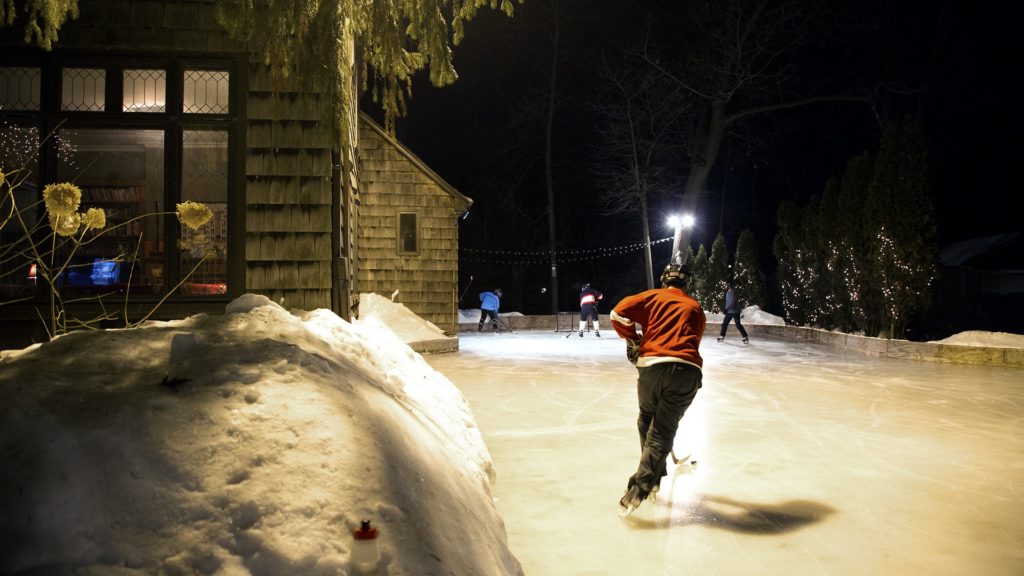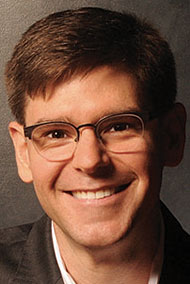
Story by Ed Berthiaume / Communications
Madhuri Vijay ’09 was taken aback by the critical praise that accompanied the January arrival of her debut novel, The Far Field.
Now, nine months and a multi-continent book tour later, comes the announcement that her novel, published by Grove Press, has been long-listed for the prestigious 2020 Carnegie Medal for Excellence in Fiction, a literary honor that could push her visibility to new heights.
“The whole thing feels somewhat surreal and a bit like a dream,” Vijay said by phone from her home in Hawaii, where she and her husband are preparing for the imminent arrival of their first child. “It’s always hard to take (the honors) seriously because it always seems like someone is going to call and say, this has all been a big mistake.”
That is not going to happen.
Ten years removed from her days as a Lawrence University undergrad, Vijay has arrived as a significant young novelist. The Far Field has been short-listed for the JCB Prize for Literature, long-listed for the DSC Prize for South Asian Literature, and has drawn stellar praise in book reviews from the Washington Post, Wall Street Journal, New Yorker, and others. On Nov. 4, the 24 books long-listed for the Carnegie medal in the fiction category will be narrowed to six finalists.
Along with accolades from the literary awards circuit comes much admiration from faculty members at Lawrence who nurtured Vijay’s storytelling skills a decade ago, not to mention current students who see her as a rock star in the making.
“When Madhuri visited my creative writing class last winter — she read at LU on the day her novel was officially released — my students saw her as a kind of superhero: glamorous and whip-smart and on the verge of international fame,” said professor of English David McGlynn. “But they only glimpsed the end result of an awful lot of work and an endless amount of dedication and determination.”
The publishing of The Far Field came after a six-year writing and editing process that Vijay called grueling, exhausting, and exhilarating. The book, set mostly in Bangalore, a metropolitan area in southern India where Vijay grew up, and the more remote, mountainous regions of Kashmir, tells the story of Shalini, a restless young woman, newly graduated from college and reeling from her mother’s death, who sets out from her privileged life in Bangalore in search of a family acquaintance from her childhood. She runs smack into the unsettled and volatile politics of Kashmir.
When Vijay launched her book tour early this year, Lawrence was an important stop. She points to her time as a student here as the impetus to a life of writing. She will tell you she arrived in the fall of 2005 as a determined but narrowly focused freshman. She’ll then tell you she left four years later having explored, sampled, and embraced every nook and cranny of the liberal arts experience, a creative enlightenment that rerouted her plans, turned her focus to fiction writing, and led her to the story that became The Far Field.
She double-majored in psychology and English at Lawrence, but it wasn’t until she was midway through a 12-month Watson Fellowship following graduation that she called off her plans to go to graduate school for psychology, applying instead to the Iowa Writers Workshop, a highly focused two-year writing residency at the University of Iowa.
Details on Lawrence’s English major here
“Lawrence itself was one of the best things that ever happened to me,” Vijay said. “I grew up in India, and our system of learning is in some ways very good because it’s very thorough and it’s science-based and it’s very rigorous, but it doesn’t allow for a lot of experimentation and play.
“So, when I got to Lawrence, I was overjoyed to discover that I could just dabble in all of these different things. I would take biology and Latin and I would sing in the choir and I would do all of these different things, which is the foundation of a liberal arts education. But it’s also, as I see it now, the foundation for being a good fiction writer, in that you have to be interested in everything all of the time and that nothing is divorced from the other thing. … Everything is worthy of study and everything is worthy of interest. That’s the thing I discovered at Lawrence.”
McGlynn was in his first year on the Lawrence faculty in 2006 when he first encountered Vijay, then a sophomore in his English 360 class. He recalled her being smart, poised and articulate, but her writing was far from polished.
“Her writing showed promise, but it also needed to be refined and to mature,” he said.
What made her stand out, though, was a willingness to work. That was evident from the get-go.
“She recognized her intellectual capacity, but she also knew capacity was only the beginning,” McGlynn said. “She knew she needed to work. She knew she needed to walk the path. That, more than anything, was her great gift. She remains one of the most dedicated and passionate students I have ever taught in my 13 years at Lawrence.”
With additional guidance from Tim Spurgin, the Bonnie Glidden Buchanan Professor of English Literature and associate professor of English, Vijay applied to and was selected for a Watson Fellowship, funding a year of travel and study. Her Watson study was focused on people from India living in foreign lands. Her travels took her to South Africa, Malaysia, and Tanzania, among other places, and her desire to write and create grew along the away.
Details on the Watson Fellowship here
“Being on the Watson means you are alone for a year,” Vijay said. “You’re absolutely independent in that nobody is looking over your shoulder. You either do the work or you don’t, which, in a nutshell, is what it means to be a writer. No one is waiting for you to produce anything. You either do the work or you don’t. All the urgency has to come from you, and it’s a lonely profession.”
Interestingly, it was during her Watson year that she first encountered Shalini and some of the other fictional characters that would eventually become key players in The Far Field. And it was her continued correspondence with McGlynn that in part set the wheels in motion.
“I wrote a short story during the Watson that had some of these same characters in it,” Vijay said. “It was very bad. But David McGlynn read it. He is one of the few people I trust to read even my worst writing. He was the one who literally suggested, ‘Why don’t you make this a novel?’ So, I wrote about 30 pages, and that’s how I got to Iowa, on the strength of those 30 pages. But it was a very different version. It had nothing to do with the book that eventually got published.
“After I got into Iowa, I didn’t touch those 30 pages, and I didn’t think about those characters for two years. It was only after Iowa when I was thinking about what to do next that I began thinking about those characters again. … If David hadn’t said that to me, I probably wouldn’t have written this book. I may have written something different, but not this book.”
Vijay is now a year into a follow-up book project that she says has yet to fully take shape. She knows the positive reaction to The Far Field assures nothing. It’s about continuing to put in the work.
“There is no point where you arrive at some sort of certainty where you say, ‘OK, this is a guarantee,’” she said of her life as a novelist. “Every single day feels like a gamble, feels like a risk, feels like you could fall at any given moment. That point (of certainty) hasn’t arrived, and I don’t think it ever will. And I don’t think it ever should. … You should always feel like you might fall flat on your face. That is the only way to do it honestly.”
Ed Berthiaume is director of public information at Lawrence University. Email: ed.c.berthiaume@lawrence.edu
















